Zcoin Review: Sigma Protocol, Private Transactions & Much More
In this Zcoin review we will be taking a look at another interesting anonymity coin that has been rolling out developments recently.
ZCoin is one of the major privacy coins that attempts to establish anonymous transactions, fungibility and decentralization of mining in a unique and scalable way.
Originally the Zerocoin protocol was developed to be an extension of Bitcoin, but when it wasn’t adopted by the community it was released as a coin and blockchain of its own.
With ZCoin you can spend without any transaction history or link to your identity. This is a dramatic improvement on privacy versus Bitcoin, where addresses are made transparent to combat the double spending problem.
Zcoin and the Zerocoin Protocol
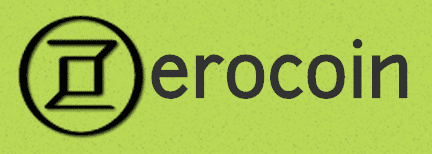
The idea for the Zerocoin protocol came from Johns Hopkins professor Matthew D Green and two of his graduate students – Ian Miers and Christina Garman. While it was proposed as an improvement for Bitcoin, it never gained consensus, and so in September 2016 Poramin Insom released a blockchain and cryptocurrency using the idea of the Zerocoin protocol.
Zcoin is unrelated to other cryptocurrencies utilizing the Zerocash Protocol. Although Zerocash is a development from Zcoin’s old protocol Zerocoin, their respective implementations are not simple forks of each other, but rely on different cryptographic assumptions with various tradeoffs
Because it was developed as a Bitcoin improvement, sending ZCoins works exactly like Bitcoin and the transactions are recorded in a public ledger. However the Zerocoin protocol uses minting to make these transactions anonymous. Basically, ZCoin requires that you mint Zerocoin before you are able to spend.
These new Zerocoins have no transaction history, and because there are so many users minting coins at the same time it becomes impossible to trace the newly minted coins to any particular user. It has been likened to a type of money laundering, where the old coins are destroyed, and the newly minted coins are untraceable.
The Sigma Protocol
The Sigma Protocol was implemented in July 2019 and replaced the Zerocoin Protocol.
Zcoin is the first full implementation of the Sigma Protocol, which allows users to have complete privacy via zero-knowledge cryptographic proofs. One of the main benefits of the Sigma protocol is that it has removed the need for the trusted setup.
The trusted setup is something that other cryptocurrencies such as ZCash have had to rely on through their "Ceremony". This has also been one of the major bones of contention for the security of the ZCash blockchain. You will really have to believe that the setup was done correctly in order to trust it.
By removing this trusted setup, the Sigma protocol places Zcoin at a unique advantage.
The Sigma Protocol is a precursor to the next-gen privacy protocol Lelantus being developed by the ZCoin cryptographer Aram Jivanyan which will further build on Sigma and greatly expand its functionality and privacy features by removing the need for fixed denominations in minting and spending.
You can learn more about the Sigma Protocol here.
Zero-Knowledge Proofs
Zerocoins uses something known as Zero-Knowledge Proofs to help maintain anonymity. Cryptography defines a zero knowledge proof as a method for one party to prove to another party that they know what the value of x is without having to share any additional information aside from the fact that they know what the value of x is.
One simple way of demonstrating this definition is to prove to a friend that you know your Gmail password without telling them what it is by logging into your Gmail account. This would prove you know what the Gmail password is, without giving any additional information.
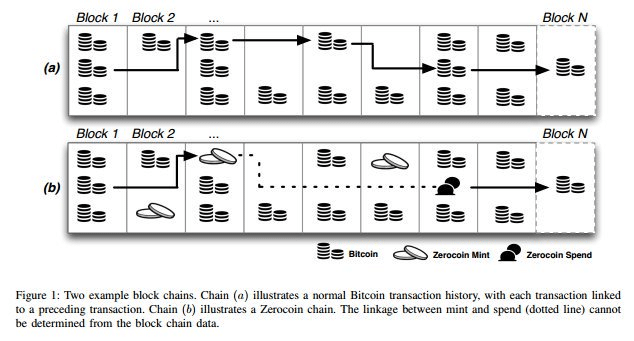
Zero knowledge proofs work for ZCoin in showing proof you own the Zcoin you are sending, without letting anyone know the source of those ZCoins.
How Zerocoin Achieves Anonymity
When a Zerocoin is minted it destroys a ZCoin in the process. When this occurs the Zerocoin protocol generates a random serial number “R” and a secret number “s”. These randomly generated R and s are then used in a cryptographic function to generate a value “V”, which you become committed to.
The V value is posted to the blockchain to prevent it from being changed in the future. This value V is publicly viewable, as are all the other V values being created by people who are minting.
Now to spend the Zerocoin R a zero knowledge proof is given showing your R value corresponds to the public value of V. This zero knowledge proof only shows that there is some V corresponding to your R, but it doesn’t reveal which one. This allows Zerocoins to be spent without anyone being able to determine their origin.
To avoid double spending of Zerocoins, Znodes verify that the zero-knowledge proof was valid and that Zerocoin R was not previously spent.
Mining ZCoin
Zcoin began using the Lyra2z algorithm for proof of work, but recently moved to the Merkle Tree Proof of Work algorithm (MTP) to address several problems.
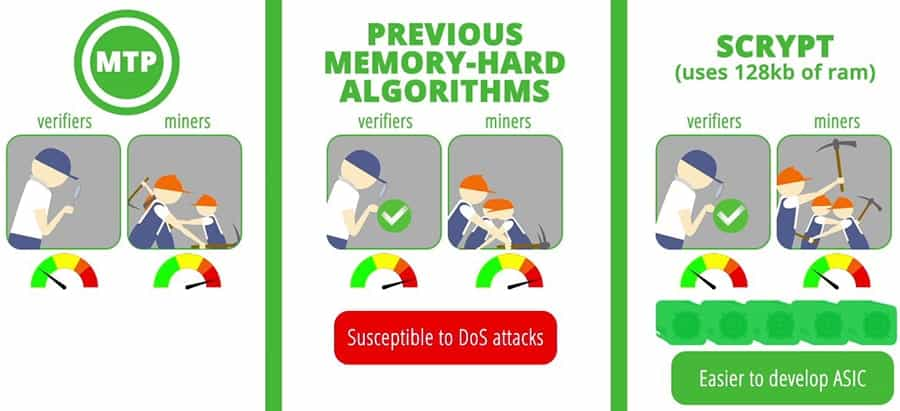
MTP is known as a memory hard algorithm and it has several benefits, one of which is the prevention of the development of ASIC chips which could lead to centralization of mining. It also helps prevent infecting computers and making them part of mining botnets. The founder of ZCoin has the following to say:
The basic concept is that it should establish the same price/cost for a single computation unit on all platforms meaning that there is no single device that should gain a significant advantage over another for the same price hence promoting egalitarian computing
So, the goal is to keep ZCoin feasible for CPU mining as a way to decentralize the security of the network. The MTP being used by ZCoin has also been made less memory intensive than previous versions, and it is less vulnerable to DOS attacks. That said, the ZCoin team isn’t against GPU mining, but with MTP CPU mining remains competitive even if GPU mining is also utilized.
If you want more information then you can read our comprehensive guide on mining ZCoin.
Founder’s Reward
The Founder’s Reward was implemented to fund the development of ZCoin, and it specifies that for the first four years 14% of mined ZCoins will go to the Founder’s Reward pool. That 14% will be split as follows:
- ZCoin Team received 6%
- Seed Investors receive 6%
- ZCoin Founder Poramin Insom receives 2%
Once the first four years have passed (in September 2020) the block rewards will revert to going entirely to miners and Znodes.
Znodes
Znodes are similar to master nodes in that they are computers on the ZCoin network that are running a full copy of the blockchain, and are working to process transactions. The Znodes are incentivized by receiving 30% of newly minted ZCoins, currently 7.5 per block.
Those running Znodes are required to stake 1,000 ZCoins however, as a way to prove that they are highly invested in the ZCoin network. The stake is an incentive to keep the network running honestly and with consistent uptime.
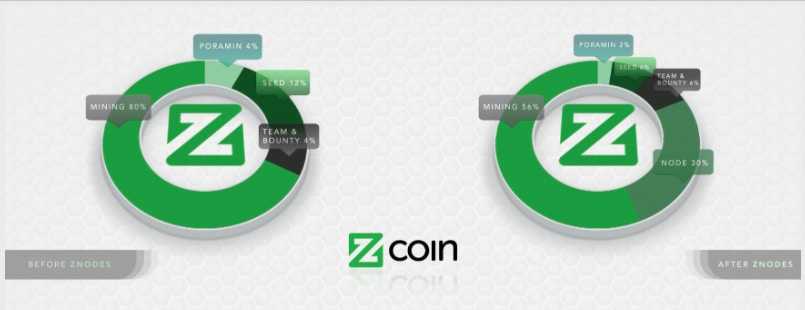
As of August 30, 2019, the rate of return for running a Znode is roughly 15.8% based on data from Masternodes.online. It estimates that a node will receive a reward every 17 days 7 hours 50 minutes.
With the price of XZC currently at $5.82 monthly income for running a Znode is roughly $75. This is based on 4,990 active master nodes. If the number of master nodes increases the payout would decrease and vice versa.
Coin Supply and Sustainability
Because ZCoin was based on Bitcoin, there were 21 million coins originally meant to be created, however, a bug in the code led to the creation of an additional 388,450 coins. That bug has been fixed and the maximum supply of ZCoin is now set at roughly 21.4 million. As of August 2019, the circulating supply of ZCoin is 8,261,093 XZC.
Like Bitcoin, ZCoin began with a block reward time of 10 minutes, however, that was decreased to 5 minutes as of June 2018. Currently, there are 25 coins awarded per block. This award will halve roughly every 4 years until all of the ZCoins have been minted. Once all coins have been minted miners will continue to be rewarded through transaction fees.
Zcoin Team
While Matthew Green originally came up with the idea for ZCoin, the implementation was the work of Poramin Insom. At the time he was working under Matthew Green at Johns Hopkins, which made for a perfect mentor relationship.
Prior to developing ZCoin, Poramin developed Vertcoin, but he moved to work on ZCoin as he saw a need for anonymous transactions in the cryptocurrency space. He plans to eventually return to the development of Vertcoin, but is fully focused on ZCoin for the time being.

The lead developer of ZCoin is Peter Shugalev, a software architect and programmer who brings over 15 years of experience to the ZCoin project. Based in Moscow, he has a Masters degree from Moscow State University in Computer Science and Mathematics and has even created his own programming language which was used in a signature-based intrusion detection system.
On the business side, the COO of ZCoin is Reuben Yap, a corporate lawyer for 10 years, who joined ZCoin in October 2016 and has been pivotal in shaping the vision and direction of the ZCoin project.
He is very well-versed in blockchain privacy protocols and spends a good deal of time traveling and speaking about them in a simple and easy to understand manner. He has long been a proponent of privacy and was previously the founder of one of the top VPN services in SE Asia (bolehvpn.com).
The XZC Token
The XZC token got off to a strong start, opening in October 2016 at just above $0.90 each. Within a week it was trading above $5, and at the end of the second week, it had rallied to $8. It couldn’t hold those levels, however, and by November it had slid back down to trade under $1.
It continued to slide throughout the remainder of 2016, although there was also a good deal of volatility, and the price was apt to change by as much as 30-50% within a matter of days.
As 2017 got started XZC had rallied back above the $1 level and was soon trading back above $2 as well. It continued climbing and June/July 2017 saw it trading in a range of $10-$20. There was a drop back under $7 in August, but XZC soon recovered, trading from $10-$15 throughout the autumn of 2017.
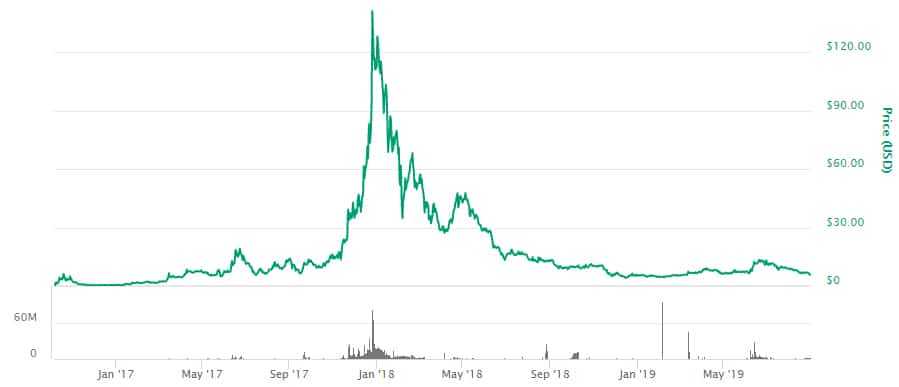
Price really began to take off in November 2017 and as is the case with most cryptocurrencies, ZCoin saw a huge run-up in price during December 2017, hitting a high of $169.99 on December 26, 2017. Since then the price has retraced quite a bit, and with the exception of a bounce in April 2018 has been steadily moving lower.
As of August 2019, one ZCoin (XZC) is worth $5.83, with price moving steadily lower for most of 2018, with a low of $4.21 hit in December. Price recovered in early 2019 and by June was trading near $15. It spent June and much of July trading in a range of $10 to $13 but then retreated along with the broader crypto markets.
Buying & Storing XZC
The largest trading volume for ZCoin (XZC) can be found on MXC, although there is also a good amount of trading volume on the CoinEx platform. CHAOEX also has a good deal of volume, and beyond that, you can get XZC at Binance, DigiFinex, Huobi Global and a number of other smaller exchanges.
In terms of volumes, it is relatively well split out on the exchanges although over 80% is concentrated in the top 3. There is decent liquidity though with healthy order books that are quite deep. This means easy execution for the large block orders.

The ZCoin project does have an official desktop GUI wallet, which is probably the best choice since it has built-in mint and spend functions. There is also an Electrum light wallet available.
For those who prefer mobile wallets, there are a number of choices including the Trust Wallet, Coinomi, Edge Wallet, Cobo Wallet and a number of others.
Plus the ZCoin developers are working on a native mobile wallet that is expected to be released by the end of 2019. Both popular hardware wallets, the Ledger and Trezor, also support XZC.
ZCoin Developement & Roadmap
Something that I sometimes like to do in order to determine the development progress on a project is to look into their GitHub repositories. By observing how much code is being pushed, one can get a good idea of exactly what is being done.
Hence, I decided to jump into Zcoin's official GitHub. Below are the code commits for the top three most active repos in their GitHub. These are the total number of commits pushed in the past year.
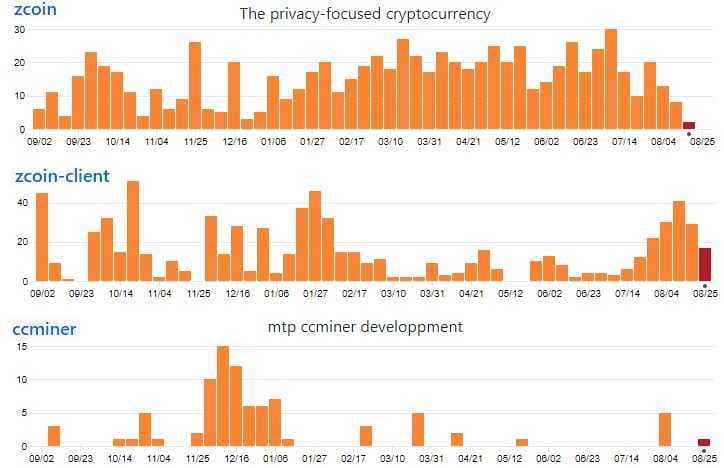
As you can see, they have been quite active with a regular stream of commits. There are also a further 66 other repositories with varying degrees of activity.
This level of development is more than we have seen on other projects at similar stages. In fact, if we were to compare Zcoin to other projects based on the total number of commits, it comes in at number 52.
This of course makes sense given that there were a number of updates that the Zcoin developers have recently been working on. The prime among these is of course the Sigma protocol which is finally out.
There are also some really exciting updates that are planned in their roadmap. Below are some of the most notable updates still planned for 2019.
- Overhaul of User Interface: A new GUI wallet is on the way that will be based on Vue.js.
- RAP: Receiver Address Privacy: This will allow users to share one static public address that will route transactions to brand new addresses. This will preserve privacy and has not been used by any other privacy coin.
- Encrypted Node Communications: This encrypted node communication will allow Zcoin traffic to be censorship resistant.
- MTP Revamp: They will improve on MTP in order to further the ASIC resistant features
- Native Mobile Wallet: Launch of a mobile wallet that will have full privacy support
Then, heading into 2020 one can expect to see research on scaling, governance and quantum resistant algorithms. If you wanted to keep up to date with the development then you can head on over to their official blog.
Conclusion
ZCoin sees some advantage from having code that is based on Bitcoin’s core code. It makes it easier for the project to implement changes that Bitcoin makes. And the anonymity factor is certainly a big deal, especially in countries such as China, where privacy is difficult to come by.
As Western nations begin to regulate cryptocurrencies there is a good chance that privacy will become increasingly important across Europe and in the U.S.
While some have complained about the Founder’s Reward being included in ZCoin, there are other cryptocurrencies out there who have implemented similar features.
After all, the development team needs funds if they are to continue working on ZCoin, and Insom himself admitted that the reason he had to halt work on Vertcoin was from lack of funds. In any case, there’s only one more year until the Founder’s reward is done, and I’m betting five years from now no one will even remember the Founder’s reward.
A dedicated founder and lead developer, combined with funding for development, and a solid roadmap makes ZCoin’s future look bright.
Disclaimer: These are the writer's opinions and should not be considered investment advice. Readers should do their own research.
Disclaimer: These are the writer’s opinions and should not be considered investment advice. Readers should do their own research.
